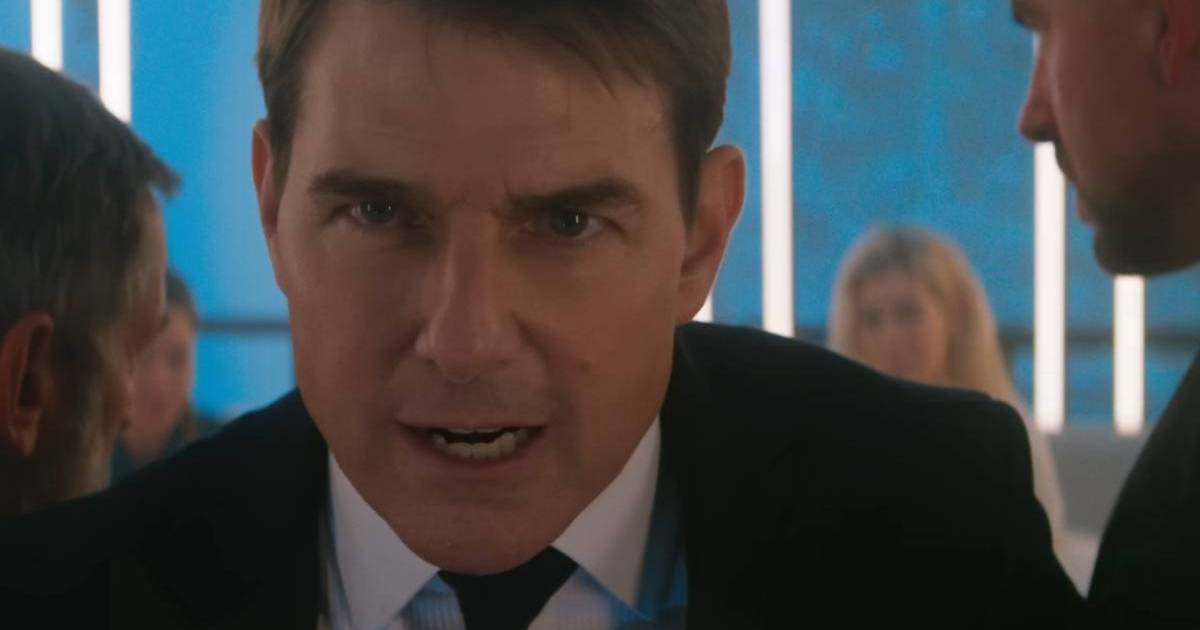
We stand at a cinematic crossroads, folks. Movies no longer possess the power they once wielded in the old days when Jurassic Park and Star Wars captivated audiences for months on end despite playing on regular-sized theater screens. With the surge of technology enabling average consumers to own an 85-inch TV and an incredible 7.2 surround system, only the most grandiose event films can entice us to leave the comfort of our homes and venture into theaters strewn with popcorn, litter, and sticky floors.
Sure, we witness numerous record-breaking blockbusters. Top Gun: Maverick soared past $700M in the United States, while James Cameron’s Avatar: The Way of Water amassed an astounding $2.5 billion in ticket sales. Recently, Universal/Illumination’s Super Mario Bros. Movie struck gold with a staggering $1.33B worldwide, and Sony’s Spider-Man: Across the Spider-Verse has already raked in nearly $500M worldwide in less than a month.
Yet, I believe these movies could achieve even greater success if given more time to flex their muscles. Top Gun performed exceptionally well, but its impact was diminished when Jurassic World: Dominion stole some of its thunder a few weeks later. Just imagine if the runway had been cleared for a few more weeks, allowing the Tom Cruise epic to remain on large-format screens like IMAX for a little longer.
Avatar and Super Mario Bros. reached unprecedented heights mainly because the competition was as dry as Gandhi’s flip-flops. Avatar, in particular, enjoyed a robust run on IMAX, allowing people to wait a few weeks before returning to the enchanting world of Pandora.
This summer, movies are clashing, competing for a fleeting moment in the spotlight before being relegated to the cheaper seats or dumped onto video. Across the Spider-Verse only had a two-week stint on IMAX before Transformers: Rise of the Beasts ousted it. Then, The Flash arrived a week later, pushing Optimus Prime to the darker corners of cineplexes. Hopefully, you had the chance to catch it on IMAX during the opening weekend because the opportunity came and went faster than a minnow can swim a dipper.
And it gets worse.
Indiana Jones and the Dial of Destiny is now in theaters, followed closely by Mission: Impossible Dead Reckoning Part One, Oppenheimer, Barbie, and The Haunted Mansion. There’s been a fair share of controversy surrounding Cruise’s action thriller and Christopher Nolan’s highly anticipated biography, both demanding viewers to see them on the largest screens possible to fully appreciate their grandeur. However, only a few weeks separate these two big-budget features. They will undoubtedly make money, but slower viewers striving to avoid the masses will be left behind, forced to spend their hard-earned money to watch Dead Reckoning on regular formats.
The same goes for Oppenheimer, which faces tough competition with Barbie and might see its IMAX screens snatched by Haunted Mansion, The Meg 2, or one of the other August releases on the schedule.
But why is there such a logjam?
Mission: Impossible was initially scheduled for release on July 23, 2021, before COVID caused numerous delays. At this point, I’m sure the studio just wants the damn thing to make money. So why not wait until October, where Cruise could command IMAX screens without interference?
This still doesn’t explain why Fast X, The Little Mermaid, Spider-Man, Transformers, The Flash, and Indiana Jones were released in such close proximity. I understand that summer is the movie season, but if Hollywood wants people to experience these event films on the largest screens possible, it needs to provide more time for them to do so. Instead of releasing five films targeting the same audience, why not stagger the big tentpole releases and offer counterprogramming? Release Spider-Man, then, two weeks later, Jennifer Lawrence’s comedy No Hard Feelings, a film that won’t require larger screens. Then, release Transformers alongside Wes Anderson’s Asteroid City. Let them simmer for a while before unveiling The Flash and Indy.
Hollywood used to be more strategic. Now, it feels like there’s a high-budget premium release popping up every week.
And what’s with the limited theatrical window? Fast X sped into theaters in early May and crashed onto streaming platforms less than 30 days later. It’s no wonder it flopped in the US. Perhaps if Vin Diesel had more than a week to showcase his prowess on IMAX, more people would have given the sequel a chance. No one wants to bother watching Fast X on a regular-sized theater screen when they can purchase it for $19.99 and watch it from the comforts of home.
Quality is certainly a problem. The Flash didn’t live up to lofty expectations. Mission: Impossible, according to all accounts, is amazing enough to warrant repeat viewings, but you have to squeeze them into a brief 14-day timeframe, a problem that Cruise is trying to address. Oppenheimer will likely enjoy the longest run on IMAX, but even then, we’re talking about maybe three weeks instead of two, and that’s only if it performs well.
Perhaps the answer lies in eliminating regular screens altogether and constructing more IMAX locations, thus providing more opportunities for the premium format. Can theaters afford to do this?
Or perhaps Hollywood should do a better job managing its blockbusters.
In 1993, Jurassic Park premiered in early June and enjoyed a year-long run in theaters. During the same month, only two other high-profile films were released — Last Action Hero and Sleepless in Seattle. All three played for months. Of course, IMAX wasn’t a thing back in the early ’90s, and we accepted whatever quality our local theaters had to offer.
Times have changed. If Jurassic Park were released today, it would only be granted a two-week window before three more large-scale productions entered its path. Then, regardless of being a blockbuster or not, we would have to spend the remaining summer days watching Steven Spielberg’s classic on a small screen tucked away at the back of the cinema. By then, it would just as likely be available on digital on demand.
I’m not a businessman, but this does not seem like a sustainable formula for success. Fast X, The Little Mermaid, Transformers, The Flash, and Pixar’s Elemental struggled to generate substantial revenue. Audiences were spread too thin, and neither film had the opportunity to linger in the public consciousness for more than a week. In 1993, we were still talking about Jurassic Park well into the holiday season, and maybe even longer. By comparison, The Little Mermaid dropped off the face of the earth a week after its debut.
Hollywood has a problem. It’s releasing far too many expensive films and not giving audiences enough time to enjoy them. Studios need to slow down and stop making so many damned movies! Give us one or two tentpoles per summer that demand the IMAX experience, followed by a healthy offering of smaller-scale productions designed for regular theater screens. Like the good ole days.
Perhaps that model doesn’t work anymore, especially with the influx of TV programming demanding our attention. Would you rather battle crowds for The Flash or stay home and watch Extraction 2?
Hollywood has a significant problem. It releases an excessive number of expensive films without allowing audiences sufficient time to savor them. Studios must slow down and stop making so many damned movies! Instead, they should provide one or two tentpole films each summer that truly warrant the IMAX experience. Following that, they can offer a diverse range of smaller-scale productions intended for regular theater screens, reminiscent of the good old days.
It’s possible that this traditional model may no longer be effective, especially with the influx of TV programming demanding our attention. Would you rather endure the crowds for The Flash or comfortably stay at home and watch Extraction 2?
Regardless, the current approach is clearly flawed. Studios are suffering significant financial losses, and moviegoers like myself are left in a race against time, desperately trying to catch the latest blockbuster before it vanishes from IMAX screens.
Something needs to change.













